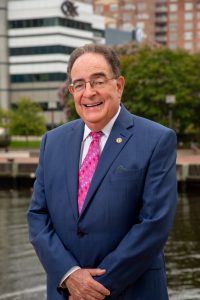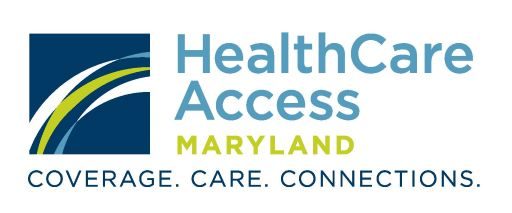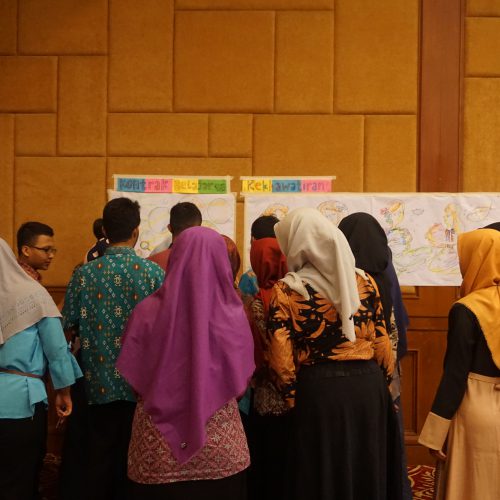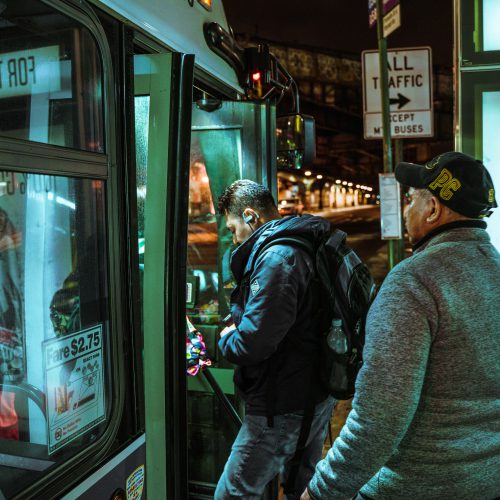October is Health Literacy Month – a time when health organizations, literacy programs, libraries, social service agencies, businesses, professional associations, government agencies, and other groups work together to integrate and expand the mission of health literacy. As an individual, being able to gain access to, understand, and then use the information in ways that not only promote but also maintain good health for yourself, your family, and your community, is a basic right that everyone should have.

Chancellor Jay Perman, MD, assumed the role as the 5th Chancellor of the University System of Maryland in January 2020, and was a previous speaker in HCAM’s Making Maryland Healthier Speaker Series. Chancellor Perman is a physician and an educator and is a staunch advocate for the role that education plays in making our state healthier, from ensuring every child receives a quality education, to literacy and health literacy issues. Chancellor Perman reflected on health literacy and its meaning to the work he does, the importance it plays for individuals and communities, and common barriers that individuals may encounter when it comes to health literacy. Continue reading to learn more about the importance of health literacy and what our community can do to support health literacy on a larger scale.
What does health literacy mean to you in your work as an educator and physician?
As a physician, I see first-hand what happens when we’re not sufficiently attentive to health literacy—when we don’t take the time or expend the energy to make sure our patients understand us and what we’re telling them. I’m a pediatric gastroenterologist, which means that—for my patients and for me—the peril is that mistakes occur, and babies fail to thrive.
And so as an educator, I have to teach students how to speak with patients and families, how to ensure they understand their diagnosis, their treatment, the instructions for care. If our health professions students are doing everything right, but then struggling to communicate well with those they serve, then they’re still falling short. They’re not going to get the outcomes we want. And that’s a practical failure.
Why is health literacy important for individuals and communities?
Well, it can be a matter of life and death. And that’s not hyperbole. Studies have shown that deficient health literacy contributes to poor health outcomes and higher mortality rates. With chronic disease especially, which requires people to manage their risk and adhere to sometimes complex treatment plans, poor health literacy can be deadly.
But it’s not just chronic disease. We just saw it with COVID. There were many mixed, or at least muddied, messages out there—and I’ll admit, some of them were from the very top, from the Centers for Disease Control (CDC) and the National Institutes of Health (NIH). Then there were conspiracy theories. There was the politicizing of a deadly disease. Some of it was misinformation, rooted in innocent ignorance, and some was disinformation by bad actors who used the coronavirus to gain an advantage.
But regardless, it was harmful to individuals and, in many cases, to whole communities, where vaccine uptake was low and many people died. The flip side of that is that many communities, many populations, wanted the vaccine and had difficulty accessing it. We have to do better on both counts.
What are some common barriers that individuals encounter in accessing and understanding information about their health?
A lot of us tend to think of health illiteracy as a problem of poverty. And certainly, poverty can contribute to it. An education deficit—often associated with poverty—can contribute. But so can many other things.
Perhaps the biggest thing we see is that anxiety can inhibit our understanding. And where are people often most anxious? In a health care setting. People with neurodivergence or learning disabilities, people who simply process information differently than most others, can have difficulty understanding health information.
People whose native language isn’t English have a huge obstacle. People who have limited access to health resources of all kinds—to health information, but also to regular and preventative health care, to a primary care physician—they can be at a severe disadvantage when it comes to health literacy. This is why you can’t just be attentive to health literacy with some patients. You have to be clear—and ensure that you’re clear—with all patients.
And this is an important point, too: Providers who don’t share a background or culture with their patients often struggle to communicate clearly with them. A lot of communication is nuance, a lot of it relies on shared knowledge or expectations—and much of that is lost between cultures. That’s why it’s so important that we teach our providers to be culturally competent.
What can physicians do to better communicate health information to patients and help them to make informed decisions?
I find I can be clearer with patients and families when I share with them what the “mechanism” is—that is, how did their condition happen? What is it that their body is doing that’s causing their symptoms? And if I’m prescribing a medication, how will it actually work to correct what’s wrong? Whenever possible, I draw pictures that families can take home with them.
We use the teach-back method in my clinic. After we give diagnoses or instructions, we say: Now pretend you’re going home to grandma and you have to explain to her what’s wrong, what are you going to say? And from there, it’s easier to coach. You can pinpoint misunderstandings and address them in the moment. And it’s collaborative. It signals to those in our care that we consider them part of the team, and that we value what they bring to it.
A lot of it is simply getting to know the person you’re talking to—not just the patient—and establishing a good rapport. Because that does two things: 1. You’ll communicate better if you’re attuned to what your patients will understand and what they won’t. And 2. Your patients will feel more comfortable asking questions if they trust you, and if you’ve modeled empathy and respect.
What role do schools and educational institutions play in promoting health literacy among students?
I talk a lot about the social determinants of health—the conditions in which we live, learn, work, and play. And as educators and physicians, many of those social determinants—people’s access to good health care coverage, to high-performing schools, to stable housing, safe neighborhoods, healthy food, reliable transportation—they’re beyond our immediate control. (Though, certainly, our long-term work is aimed at ameliorating all of these things.)
But health literacy isn’t beyond our control. As educators, we can teach it. We can show students where to get reliable information, how to access it, what questions to ask. As educators, we can advocate for clear communication. We can teach others (people and organizations) to be clear communicators. And, together, we can advocate for equitable, person-centered health care systems.
What can we do as individuals to improve health literacy in communities?
We can call attention to it. We can lobby for it. We can fund it. The Horowitz Center for Health Literacy at the University of Maryland School of Public Health is the only center in the country that focuses on health literacy—on improving health literacy—as a public health issue. The center provides research, education, and service to improve health literacy at all levels: for individuals, families, communities, organizations, and society. We’re very proud of it.
Because before we can really move the needle on health literacy, people need to know what it is, why it’s important, and what the consequences are if we don’t get this right. The kind of work undertaken by the Horowitz Center and similar organizations is our first step in getting it right.






